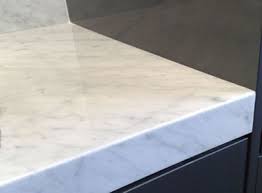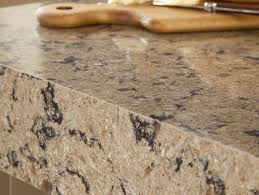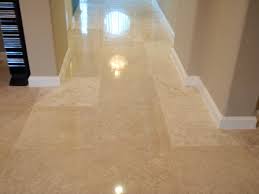How to Clean Marble Bathrooms, Floors, Tables, Tiles, Countertops and Other Fixtures
You may wonder why there are special techniques used in the care and maintenance of marble. I mean, it’s a rock, right? True, but some stones are softer than others.
Marble is basically limestone that has combined and metamorphosed with other natural elements, making it a relatively soft rock that’s filled with veins of various colors and patterns.
Just like limestone, marble is easily etched, stained, and dulled. It’s more sensitive to certain foods and chemicals, and is not as impervious or as hard and resistant as granite.
Yet marble is very durable, and with proper care, it will last forever.

Below you’ll find tips and information for the following:
- Marble Sealers
- Marble Maintenance
- Proper Cleaning Solutions
- How To Do Everyday Cleaning
- Cleaning Marble Floors
- Deeper Cleaning
- Disinfecting
- How To Clean Up Spills
- Polishing
This may seem like a lot, but after you’ve learned a few simple cleaning and maintenance techniques, it becomes almost second nature, just like how you treat wood, cashmere or leather can become routine.
Please allow me to preclude the cleaning tips with a few care tips for new marble, because you should follow them before you clean new marble.
1. Marble Sealers
Immediately after your marble is installed, or after a thorough cleaning and ample drying time for older marble installations, you will sometimes want to apply a sealer to your marble for added protection.
Applying a sealant is pretty easy, and the cost and time involved is minimal when considering how proper marble care helps you avoid damage and expensive marble repair, as well as how it keeps your marble floors and countertops looking gorgeous for years on end.
How a Sealer Works – The sealing products you see used in the stone mason industry are actually impregnators, not sealers. They act more as a repellent. So don’t think a sealer will prevent all stain and damage to your marble. However, an impregnating sealer is often recommended, as it will greatly reduce marble stains from spills that are wiped up immediately.
Sealers Do Not Totally Prevent Scratches or Stains. Sealing does not make the stone stain proof, rather it makes the stone more stain resistant.
Sealing will not prevent scratches or etching (chemical etching often occurs due to acidic substances, such as household cleaners and acidic foods).
Choose the Proper Sealer – Use a high quality sealer made specifically for stone or marble. There are many out there, and it might be hard to know which ones will do the best job at penetrating the stone or which lasts the longest. We personally recommend sealers like SenGuard or Stone Care to help protect your marble.
For kitchen counters, be sure your sealer is non-toxic and safe for use in food preparation areas.
2. Marble Maintenance
Efflorescence – For I newly installed marble, you might see a white powder that appear on the surface. This is normal, and harmless. It’s just mineral salt deposits brought up through the stone as the water in the stone evaporates.

You can vacuum or dust mop the powder, but don’t use water to remove the powder, as that will the stone longer to dry out and finish evaporating its own moisture.
You may have to do this many times until the stone permanently dries out, but if the efflorescence problem persists for more than two months, contact the installer to determine if there isn’t something else causing the moisture.
Protect Marble From Scratches. No sharp objects. Don’t scoot or set sharp-edged objects directly on marble.
Use coasters, trivets and mats. Use coasters for glasses, trivets or placemats for plates, and mats for appliances on marble countertops. This not only prevents scratches, but prevents damage from heat, or etching caused by spills of acidic drinks such as orange juice or alcohol. To keep it simple, just treat your marble like nice wood, and use coasters.
Use padding. Use padding under table legs and chairs. No heavy objects on thin marble. Don’t stand or sit on your marble countertops or tables. Too much weight can cause a crack on thinner marbles, like that used for countertops.
Use vanity trays. Place toiletries such as hand soaps, toothpaste, lotions, perfumes, etc., on a decorative bathroom vanity tray. This protect from scratches, as well as etching caused by chemicals in hygiene products, and may even prevent stains from those products, as well. Such a bathroom vanity tray will not only protect your marble bathroom sink counter area, but you’ll feel like you’re in a fancy hotel with posh decor.
Use floor mats, area rugs and hallway runners near every entrance, as well as any high traffic area where you have marble tile floors. This helps minimize scratches from dirt, sand and grit. Of course, make sure your rugs are slip-resistant.
3. Proper Cleaning Solutions
Many common household cleaners contain alkalis, acids, and chemicals that can damage or etch your countertop surface, as well as thin and dissolve the sealant, which leaves your marble vulnerable to damage from stains.
Cleaning marble with your typical brand name or generic household cleaners, and even natural cleaners, is the most common cause of marble damage.
Don’t use ammonia, vinegar, orange or lemon for cleaning. Although vinegar is a good cleaning agent and disinfectant for many surfaces, it is acidic, as are the other items mentioned, and they can cause corrosive etching on your marble.
And definitely don’t use the average bathroom, grout cleaner, or tub and tile type cleaners. These often use abrasives that can dull and even scratch the surface of your marble.
Many rust removers that are commercially available, such as toilet bowl cleaners and laundry rust stain removers, contain trace amounts of hydrofluoric acid (HF). The silicates and other minerals in your marble will be attacked by the HF acid and deteriorate them.
So What Do You Use To Clean Marble?
I’ve heard it said that you simply use hot water and a sponge for daily cleaning, and once a week use a stone cleaner. However, that seems to me like it applies just to floors or areas that don’t need to be sterile. Some disinfecting tips are listed below.
- Whatever you do, only use cleaning products specifically formulated for cleaning marble and you will save yourself the headache and hassle of costly and time-consuming re-polishing or repairs.
- There are many marble cleaning products on the market, but four brands that have proven to be better than most are Marble Life, SCI, Miracle and Stone Tech). They all offer great quality and value.
4. How To Do Everyday Cleaning
Whatever cleaner you use, make sure you use it with a sponge, soft cloth, chamois, or dust mop. Don’t scrub because you will spread bits of dirt and sand around, which could scratch the marble.

Run the damp sponge or cloth gently over the surface while making a circular motion in any spots that might need a extra pressure. Thoroughly rinse the surface after washing, and be sure to change the rinse water frequently when cleaning larger or extra-dirty surfaces.
Don’t leave either pools of water or even a slight layer of moisture to dry on the marble to prevent stains and scum build-up. Use a soft, dry cloth to dry all the marble surfaces after you’ve cleaned them. Then buff it with a second dry cloth for a nice shine. (See below for more polishing tips.)
5. Cleaning Marble Floors
Dust mop floors made with marble tile on a regular basis. Unless you plan to eat off your floor, the only cleaners you need to use to clean your marble regularly are hot water for daily cleaning and a specially formulated stone cleaner once a week.
Use a non-treated, dry, clean, dust-mop. Be extra careful if you use a vacuum cleaner because grit jammed in the wheels or ragged, worn parts can scratch the surface. So be sure the wheels are not rough, and that the plastic or metal attachments or in good shape, preferably with soft bristles that are not worn.
6. Deeper Cleaning
You can get a deeper cleaning with a light, natural soap, or take some gentle dish soap and dilute it yourself, as the suds help remove dirt particles trapped in the marble pores.
Similar to any item cleaned in your home, an excessive concentration of cleaner or soap may leave a film and cause streaks, so use it sparingly and buff it with a soft cloth afterwards for a beautiful shine.
Tip: Minimize soap scum in commonly wet areas, such as the bathroom, by using a squeegee after each use. You can also look for a non-acidic soap scum remover specifically designed for marble.
Of course, we want to disinfect surfaces in the bathroom, kitchen I and other areas, and areas such as hot tubs and pools sometimes attract algae, moss and mold. So go ahead and flush the area with plain water and use a mild bleach solution to thoroughly sterilize an area.
7. Disinfecting
There are commercial cleaners available that are specifically made for marble, that will disinfect and won’t harm your marble. But if you’re in a pinch and need to disinfect something right away, there are common household items you can use.
- Hydrogen Peroxide – Mold is common in bathroom tile grout and can be a serious health concern. To get rid of the mold, mix one part 3% hydrogen peroxide with two parts water and spray on the effected areas. Wait an hour before rinsing or showering. It does act like a bleach in that it will lighten darker marbles (and can bleach your clothes, or hair, etc.) so it’s best for lighter color marble surfaces.
- Vinegar or Ammonia – Bleach is not the only solution. I know I mentioned how ammonia and vinegar should be avoided because they can hurt your marble. But if you need to disinfect your marble and can’t wait to find a better cleaner, then you can use ammonia OR vinegar on occasion. Just don’t get in the habit of it, as it really will dull and etch your marble. But as long as you use a low concentration, rinse well with plain water, buff it well afterwards, and use a polish, and don’t use it too often, then it shouldn’t harm your marble. DANGER: do not EVER mix bleach with vinegar, or ammonia and bleach, or ammonia and vinegar, etc. Use each one separately. Mixing any of them together causes harmful gases that will damage your lungs and the lungs of those around you.
- Bleach – Bleach is toxic and should be a last resort. Also, bleach can lighten darker marbles, but it is an effective disinfectant for lighter marbles if used properly. To kill common bacteria and regular disinfecting of food related surfaces, use unscented, regular 5% to 6% household bleach, as recommended by The Center for Disease Control (CDC, an American government regulatory agency) at a ratio of 1 tsp bleach per gallon of water. For common disinfecting of all other surfaces, use 1 Cup of bleach per 5 gallons of water. And to kill mold and mildew that has already gotten a foothold, use 1 Cup of bleach per one (1) gallon of water.
8. How To Clean Up Spills
Marble can become stained or etched quickly if a liquid or even dry powders sit on it for even a short period of time. Especially clean up wet spills like coffee, any type of black tea, orange juice, and wine immediately after they are spilled.
Dry spills are serious, too. Materials with staining pigments, such as curry, cumin, coffee grounds, and even leafy greens, should be gently vacuumed or swept up right away when they’re spilled on any marble surface.
How to Clean Up a Spill – Blot. Flush. Dab. Repeat. Blot up spills with a paper towel immediately. Don’t rub as you wipe the area, or it it will push the spilled substance into the pores of the marble as well as spread the spill. Flush the area with mild soap or cleaner of your choice, or even just plain water, and rinse several times. Thoroughly dry the area with a soft cloth. Repeat as necessary.
8. Polishing
After each cleaning, after you’ve dried the marble, give it a quick buff with a soft cloth. This helps remove cleaning solution residues and gives your marble a shiny glow. There are also commercial marble polishes available. Just make sure it’s intended specifically for marble. Not all stone is the same, so it’s best to avoid cleaners made for granite or even for cleaning ”stone” in general.
Stone PLUS Cleaner has received rave reviews for its effectiveness on marble.
A spray surface dressing, such as Dazzle Topical Polish Shine Enhancer, will improve the shine and give your marble a little more protection.
Polishing a marble floor can make a very slippery surface when wet, so take precaution when other people may walk on those floors shortly after you’ve polished them.
Marble is so gorgeous, with luxurious beauty, that it is well worth the time it takes to learn and apply these few marble care tips.

